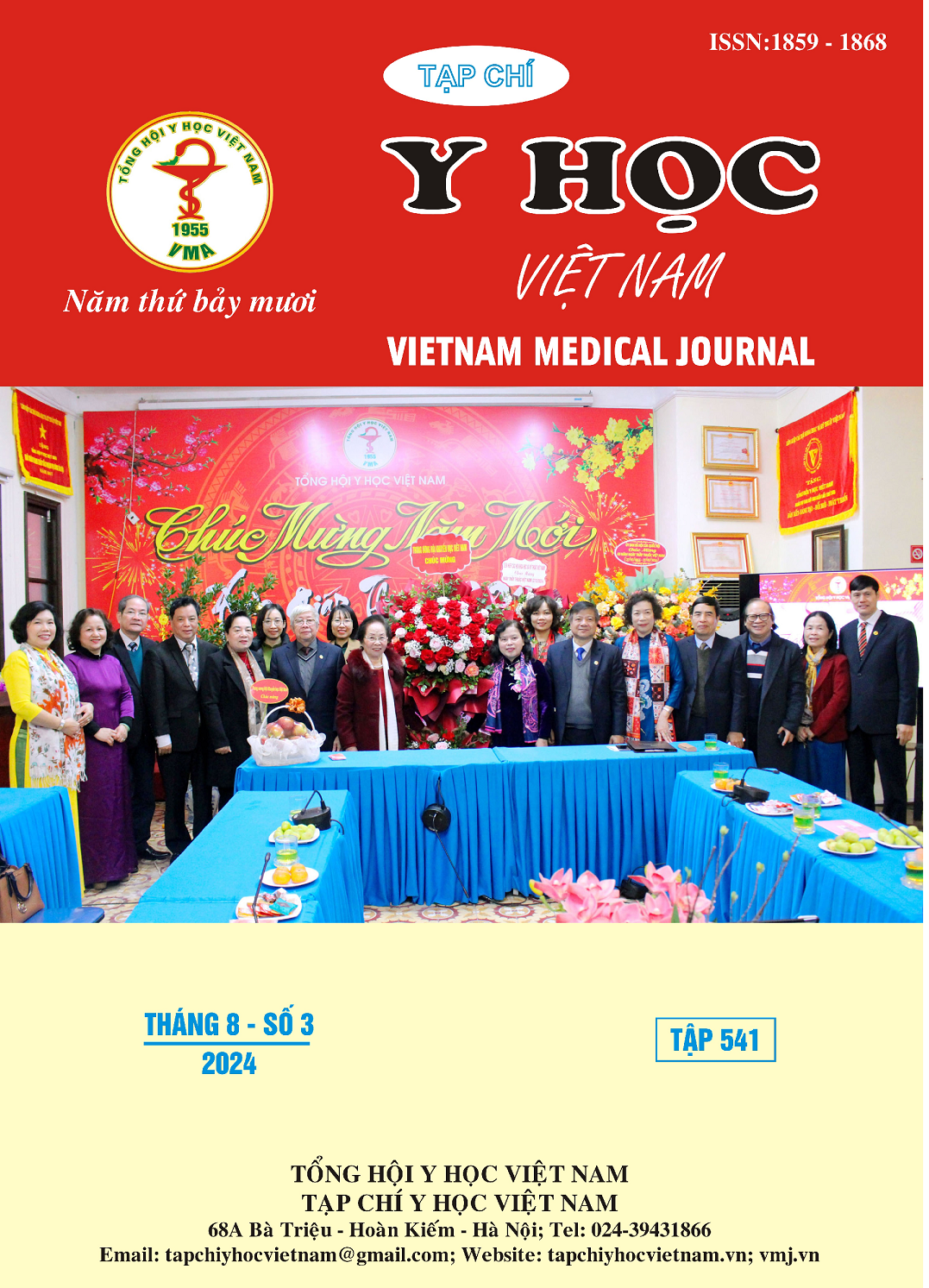EARLY OUTCOMES OF LAPAROSCOPIC CHOLESCYSTOJEJUNOSTOMY AND GASTROJEJUNOSTOMY IN ADVANCED-STAGES OF PANCREATIC HEAD TUMORS
Main Article Content
Abstract
Background: Pancreaticoduodenectomy offers the posibility of radical resection for pancreatic head cancer. However, up to 80% of cases of pancreatic head cancer are diagnosed at an advanced stage and are unsuitable for this surgery. Cholecystojejunostomy and gastrojejunostomy is an effective palliative treatment option for patients with advanced-stage disease who have biliary or duodenal obstruction. We performed laparoscopic cholecystojejunostomy and gastrojejunostomy instead of conventional open surgery in order to provide the benefits of minimal invasive surgery for patients. Methods: Retrospective cross-sectional description. Inclusion criteria: patients diagnosed with advanced-stage pancreatic head tumors underwent laparoscopic cholecystojejunostomy and gastrojejunostomy at the Hepatobiliary and Pancreatic Department of Cho Ray hospital from 10/2021 to 02/2023. Exclusion criteria: Cases with missing research data in medical records. Results: We recruited 30 cases that met the study criteria. The average age was 63.9 ± 8.5 years, with a male-to-female ratio of 1:2. Clinical manifestations included abdominal pain (97%), jaundice (87%), and vomiting (27%). The tumor size was 4.3 ± 1.3 cm. 86.7% showed invasion into the SMV, and 26.7% had duodenal obstruction. The technical success rate was 100%, with no intraoperative complications. The average operative time was 171 ± 25.3 minutes, with a blood loss of 43.7 ± 18.1 ml. Postoperatively, the level of bilirubins and transaminases decreased significantly compared to preoperative levels. The postoperative vomiting rate was 3.3% which responded to medical treatment. There was no surgical complications or deaths after surgery. The average hospital stay was 6.95 days. Conclusion: Laparoscopic cholecystojejunostomy and gastrojejunostomy for the treatment of advanced-stages pancreatic head cancer is a feasible and safe technique. However, this surgery requires skillful surgeons and the operative time is relatively long.
Article Details
Keywords
Advanced head pancreatic cancer, Laparoscopic cholescystojejunostomy, Laparoscopic gastrojejunostomy, Palliative surgery
References
2. Nguyễn Anh Binh. Kết quả phẫu thuật nối tắt mật ruột trên bệnh nhân ung thư quanh bóng Vater. Luận văn thạc sĩ. Đại học Y Dược TP Hồ Chí Minh; 2017.
3. Ducreux M, Cuhna AS, Caramella C, et al. Cancer of the pancreas: ESMO Clinical Practice Guidelines for diagnosis, treatment and follow-up. Annals of oncology. 2015;26(5):v56-v68.doi:10./annonc/mdv295.
4. Singh S, Sachdev AK, Chaudhary A, et al. Palliative surgical bypass for unresectable periampullary carcinoma. Hepatobiliary & Pancreatic Diseases International: HBPD INT. 2008; 7(3):308-312.
5. Kneuertz PJ, Cunningham SC, Cameron JL, et al. Palliative surgical management of patients with unresectable pancreatic adenocarcinoma: trends and lessons learned from a large, single institution experience. J Gastrointest Surg. 2011; 15 (1917-1927.doi:10.1007/s11605-011-1665-9.
6. Lê Đức Hải. Kết quả sớm của phẫu thuật nội soi hoàn toàn nối mật ruột, nối vị tràng ở bệnh nhân ung thư quanh bóng vater giai đoạn trễ. Luận văn chuyên khoa cấp II. Đại học Y Dược TP Hồ Chí Minh; 2018.
7. Kohan G, Ocampo CG, Zandalazini HI, et al. Laparoscopic hepaticojejunostomy and gastrojejunostomy for palliative treatment of pancreatic head cancer in 48 patients. Surg Endosc J. 2015;29(7):1970-1975.doi:10.1007/ s00464-014-3894-y.
8. Hamade AM, Al-Bahrani AZ, Owera AMA, et al. Therapeutic, prophylactic, and preresection applications of laparoscopic gastric and biliary bypass for patients with periampullary malignancy. Surg Endosc J. 2005;19(1333-1340.doi:10.1007/s00464-004-2282-4.
9. Rhodes M, Nathanson L, Fielding G. Laparoscopic biliary and gastric bypass: a useful adjunct in the treatment of carcinoma of the pancreas. Gut. 1995; 36(5):778-780.doi: 10.1136/ gut.36.5.778.


